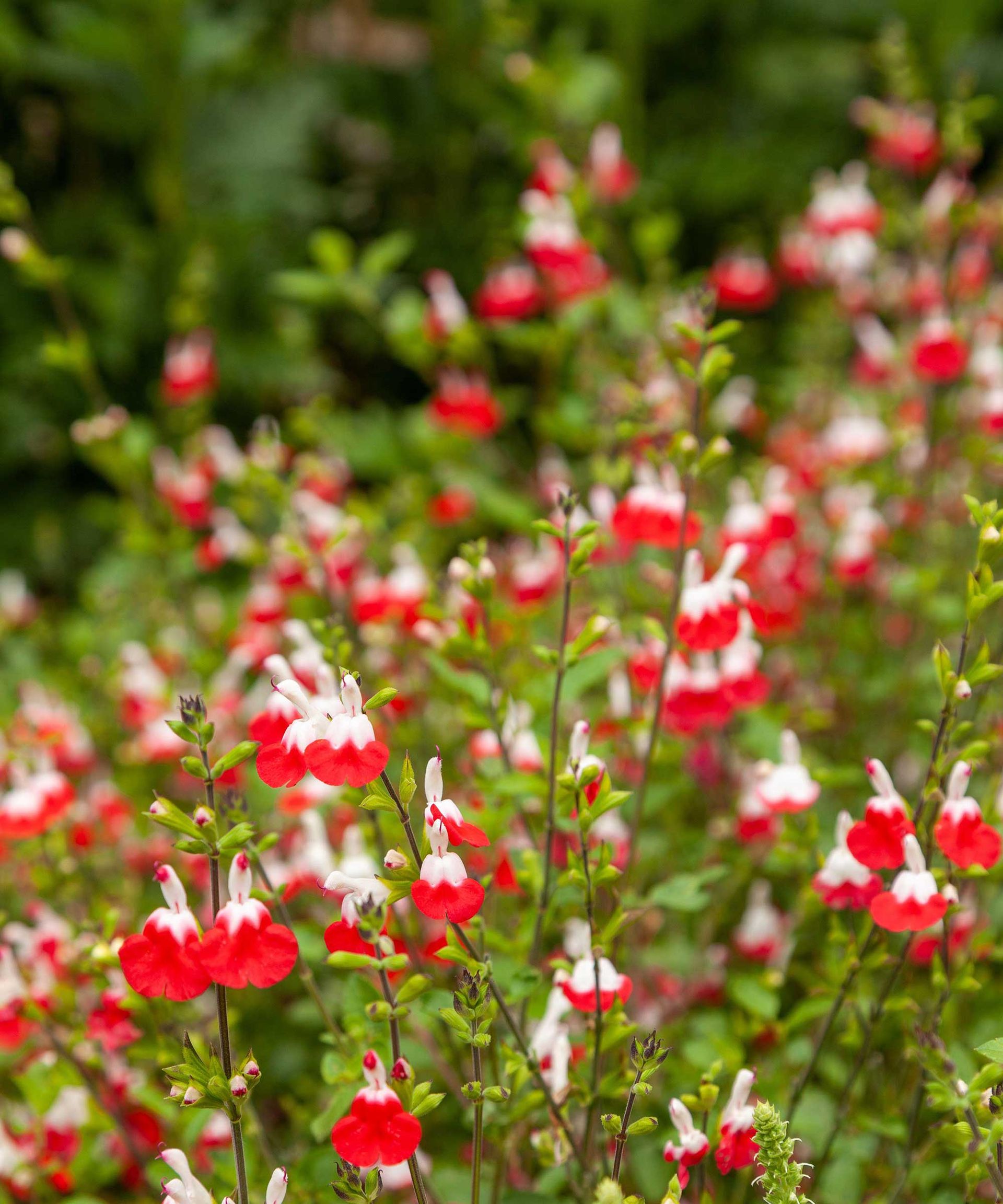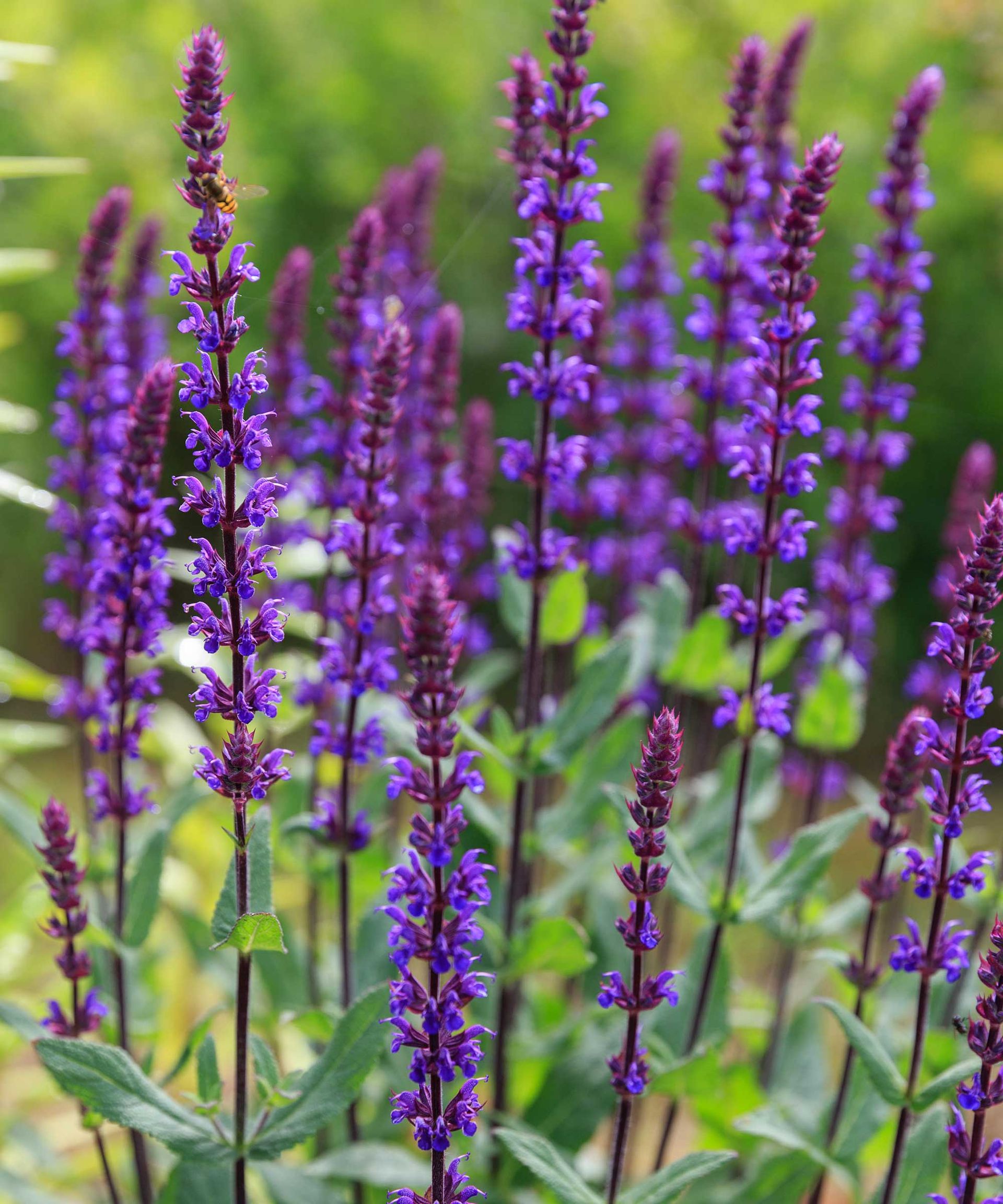How to prune salvias – according to the experts
These late-summer flowers brighten the garden year after year – and will perform even better if you prune them correctly
- (opens in new tab)
- (opens in new tab)
- (opens in new tab)
- Sign up to our newsletter Newsletter


Knowing how to prune salvias properly will help them last for years, so they can continue to brighten garden borders and welcome pollinators summer after summer.
Giving them a trim now and again is great for keeping them compact rather than leggy, and can also encourage more flowers. And doing it at the right time is crucial to help them survive the winter cold.
It's a key part of growing salvias successfully, and isn't tricky to do, once you know how. To help you get started, the experts share their tips for these woody shrubs.

Salvia 'Hot Lips'
When and how should you cut back salvias?
‘You need to prune twice annually, to promote an attractive, bushy growth habit,’ says William Dyson, who runs a nursery that specializes in salvias (opens in new tab). He recommends pruning fairly hard in early to mid-spring, removing dead wood.

John has been a garden journalist for over 50 years and regularly answers readers' questions in Amateur Gardening magazine, including many about salvias. He has also written four books and has delivered many talks on horticulture.
John Negus agrees, advising to shorten the plants to within 18in of the base in spring. Follow this by feeding them with fish, blood and bone meal, repeating applications monthly until early fall, he adds. 'Latent buds around stumps will burgeon within three or four weeks and create a nicely balanced bush.'
A second, lighter trim is recommended in mid-summer, cutting crisscrossing or unruly stems back to a pair of leaves and deadheading blooms. ‘Not only does this encourage a tidy framework of branches and prevent bushes from becoming straggly, but it also removes the spent flowers from the early flush of flowering, fostering another major flush,’ William says.
In fall, when your salvias' show is over, don't be tempted to cut them back again – the top growth will help protect the crowns from cold weather, says John. Apply a thick layer of mulch, he adds, and then wait until spring to prune again.
Top tip: 'If you are reducing thick stems – more than 0.5in in diameter – smear cuts with petroleum jelly to conserve moisture,' advises John. Anvil pruning shears, such as these ones from Amazon (opens in new tab), create cleaner cuts on such woodier material.

Salvia nemorosa 'Caradonna'
How long do salvia plants last?
Learning how to prune salvias will help to boost their lifespan, which can surpass ten years with the right growing conditions. Anne Swithinbank, an expert gardener and garden writer, says her 'Lemon Pie' salvia, which she prunes hard every spring, has lasted 20 years through many cold, wet winters.
However, hardiness varies across varieties, so in cold regions, it's best to take cuttings from the plants as backup, Anne adds. She suggests doing this in mid- to late summer, taking either 3-4in heel cuttings or shoot tips.
How should you tackle a leggy salvia plant?
Leggy growth can be a result of neglecting to prune your salvia, but can also be caused if it's growing in shade and not receiving enough light to ensure that growth is stocky. If the latter, you may wish to relocate it to a more open, sunny position, says John Negus of Amateur Gardening. 'If you think it would benefit from being transplanted elsewhere, tackle it in early spring, provided the soil is crumbly and draining freely. If not, wait until it is fit for digging.
'Ensure that you lift it with as much soil as possible around its roots,' he adds.
'It could then be pruned later in spring when it has re-established,' he continues. To do so, shorten the stems by at least half their length.
Should you prune annual salvias?
You don't need to prune annual varieties of salvias, as they complete their lifespan within a year. Simply dig them up and put them in your compost bin at the end of fall, once they have finished flowering.

Jennifer is the Digital Editor at Homes & Gardens. Having worked in the interiors industry for a number of years, spanning many publications, she now hones her digital prowess on the 'best interiors website' in the world. Multi-skilled, Jennifer has worked in PR and marketing, and the occasional dabble in the social media, commercial and e-commerce space. Over the years, she has written about every area of the home, from compiling design houses from some of the best interior designers in the world to sourcing celebrity homes, reviewing appliances and even the odd news story or two.
-
-
 Are you making these critical design mistakes in your small home office? Experts reveal 7 they always avoid
Are you making these critical design mistakes in your small home office? Experts reveal 7 they always avoidWant to know what's wrong with your workspace? Experts reveal the top 7 design mistakes we're making in our small spaces
By Zara Stacey • Published
-
 OXO Brew 8-Cup Coffee Maker review: a reliable pot of coffee every time
OXO Brew 8-Cup Coffee Maker review: a reliable pot of coffee every timeIt's not as fancy as the competition, but this workhorse gets the job done
By Aleenah Ansari • Published

